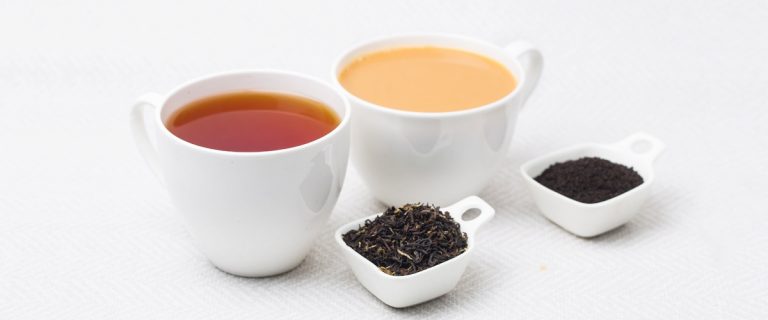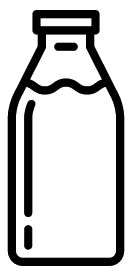
Chai is steeped in a rich history. The name “chai” is actually the Hindi word for “tea”, which was derived from “cha”, the Chinese word for “tea”. In this case, the Hindi term chai means a mix of spices steeped into a tea-like beverage. Recipes for chai vary across continents, cultures, towns and families. But the traditional ingredients of a spiced tea blend usually include black tea mixed with strong spices, like cinnamon, cardamom, cloves, ginger and black peppercorns. The spiced tea mixture is typically brewed strong with milk and sweetened with sugar or honey. However, the milky sweet tea treat we order in coffee and tea shops today has very little in common with the origins of Indian chai.
In India, the term ‘chai’ means tea. Since most Indians drink tea boiled with milk and sugar the word has become synonymous with milk tea. There are several variations and the names usually indicate the condiment used with the tea. When ginger is added, it’s Adrak Chai. A ‘masala chai’ is a chai tea with milk and a hint of spices – cardamom, cloves, and cinnamon mostly. Saunf wali chai is the same milk tea flavored with fennel seeds. The main difference between chai and masala tea is the addition of spices. Chai is black tea and hot milk, while Masala tea will combine black tea, milk and a few spices.
With chai growing in popularity, Western tea drinkers have begun referring to milk tea as chai tea or chai latte. Latte is Italian for milk; café latte is a combination of espresso and milk similar to the French grand crème, the German Milchkaffee and the international cappuccino.
A chai latte is, therefore, a combination of tea and milk made by pouring a tea infusion into a glass of hot milk. Chai tea latte recipes use an infusion of black tea with spices like pepper, ginger, cloves, cardamom and star anise. For an Indian though, this recipe sounds very similar to the masala chai but perhaps, slightly unappealing too, as pouring the tea infusion into milk instead of boiling them all together is quite unheard of in these parts.
Components of chai
Since traditional chai beverages can vary from town-to-town and family-to-family, there is no one recipe that defines chai. But the beverage typically consists of these ingredient categories:

Tea: The Assam and Darjeeling black teas native to India are most popular to use as a chai base. But you’ll also find chai made with various types of green teas, the South American herb yerba mate or the South African herb red rooibos. You may also find completely herbal blends made only from spices and containing no tea leaves.

Sweetener: White sugar, brown sugar and honey are typical chai sweeteners, but other sugars, like demerara, turbinado or coconut, may also be used. Jaggery, an unrefined cane sugar, is a popular sweetener used in parts of India.

Milk: Indian chai is often made with buffalo milk. But the more Western version that we are used to is typically made with cow’s milk or dairy alternatives, like soy, almond, rice and coconut milks. You may also find yak or goat milk in other chai beverages around the world. Some recipes will have you steep a strong chai in water and then dilute it with milk. Other recipes have you simmer the chai spices in a mixture of water and milk or in all milk.

Spices: The spices, or “masala”, used in chai will vary by region, climate and cultural preference. Traditionally, cardamom, ginger, cloves, cinnamon and black peppercorns were dominant chai spices and all readily available in India. Vanilla, nutmeg, mace, star anise or fennel may also be seen in some traditional recipes. As chai moved west, bay leaf, allspice, cacao or saffron became popular additions. Coriander and cumin may also show up in some recipes.